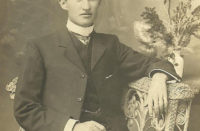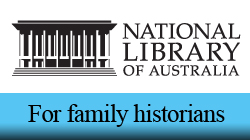The German-Queenslanders – A Celebration

The Cultural Contribution
Since the 1850s until the present time German immigrants and their descendants, the German-Queenslanders, have made and are still making an enormous and significant contribution to the cultural landscape of our great State.
Our early German pioneers brought their ‘cultural baggage’, folkways and customs that have added to Queensland’s diverse cultural landscape. From early settlement until 1912 waves of German immigrants – artisans, tradespeople and framers brought their home culture to the new land. As well as the transplanted culture, the descendants developed their unique ‘home-grown’ culture, drawing on the immigrant experience and the vitality of the new land.
Culture is a diverse field and includes aspects in our daily lives such as religion, language, literature, food customs, musical traditions, art, crafts and folkways. In fact culture touches our lives on a daily basis.
Think of brass bands, accordion music, wurst, kuchen (cake), tin kettlings, choral and organ music and you still only have part of the German-derived cultural mosaic for Queensland. Just a few instances of the outstanding cultural contribution are listed below.
Religion
In the German-settled Barossa district of South Australia virtually all the migrants were of the Lutheran faith. The situation in the Queensland diaspora was quite different. Although adherents of the Lutheran faith dominated the overall number of immigrants, many immigrants were of the Catholic, Baptist and Apostolic faiths.
In particular, the Apostolic Church of Queensland, founded in Queensland by Apostle Heinrich F Niemeyer, attracted many pioneering German families. The pioneering German settlements of Hatton Vale, Brightview, Pimpama, Mt Beppo, Binjour Plateau and Malmoe were largely settled by folk from the Apostolic Church of Queensland. The Church also sponsored three shiploads of German immigrants from the Ruhr Valley who arrived just prior to the Great War.
The Baptist Church of Queensland had German pioneer congregations at Kalbar (Engelsburg), Marburg, Fernvale and Tent Hill whereas the Catholic faith had large German communities in Brisbane, Laidley and Pittsworth.
Arts and Craft
Two Toowoomba artists, Ralph Weppner and Herbert Carstens, were influential and fine landscape painters were founded the Royal Queensland Arts Society. They both produced many fine paintings during the 1940s and 1950s. Influential artists in their own right, these artists inspired young painters to pursue their passion.
Master cabinet makers such as Rosenstengel and Kleimeyer (Toowoomba), the Lohrisch family (Beenleigh) and the Boettcher family (Ipswich) produced beautiful furniture using Queensland’s fine scrub timbers and also often ‘doubled’ as the local undertakers. Today furniture with the unmistakeable stamp of ‘Rosenstengel and Kleimeyer’ are highly valued pieces and keenly sought after.
Hermann Neumann, master craftsman from Laidley in the German settled Lockyer Valley, crafted beautiful violins and later played them with his family in local concerts. Today his instruments are highly prized.
The Kamradt brothers of Maryborough, Gustav and Otto, undertook the craft of chip carving (tramp art) and produced the most intricate geometric carvings to adorn hand crafted furniture such as large clocks and table tops.
Stonemasons such as the Wagner and Ziegler families of Toowoomba were sculpture artisans and produced numerous works of art on the headstones that today abound in the ‘German cemeteries’ of southern Queensland.
Sculptor and masonry master John Theodore Muller was born in Dresden and migrated to Queensland in 1911. From 1939 until his death in 1953 at the age of 80 years he painstakingly carved in stone the beautiful landscape and historical friezes, gargoyles and busts that adorn the Great Court at the University of Queensland.
Literature and Poetry
From the earliest days German visitors to Queensland and our German immigrants have been writing about Queensland, its landscapes and people, for both German audiences and the new settlers. Czech born author Emil Hansel (‘Hans von Lippa’) wrote about the early German community in Brisbane in the late 1880s and also documented his wanderings in his fascinating tome ‘Oben und Unten’.
Pioneer Baldwin Goener detailed his adventurous life on the land and his wonderful diaries of his working life in the German communities of Queensland gives us a direct insight into the pioneering times. His original diaries are today preserved in the Fryer Library, University of Queensland.
Although there has been little documentation of the stories of the descendants of the pioneers and the ways of the German-Queensland farmers, Herb Heilig, born in the Darling Downs village of Goombungee, wrote a number of humorous stories of the early settlers in southern Queensland. His collection of short stories, ‘Unter der Kurrajong’, is highly recommended.
Queensland born writer David Denholm (alias ‘David Forrest’) produced a number of short stories vividly illustrating the trials and tribulations of the German-Queensland descendants on the land. His short work ‘The Singing farmers’ documents so well the fading German traditions in a German settled community in the Burnett district.
More recently, Flensberg born Manfred Jurgensen was Professor of German Literature at the University of Queensland and an acclaimed author and poet, producing a number of works such as the Brisbane-centred novel ‘Eye of the Tiger’.
Language
An important part of the cultural baggage of the immigrant experience is language. Both ‘High’ German and the various dialects of Plattdeutsch (‘Low’ German) were spoken. For instance in the German settled Lockyer valley in the early 1900s there were seven district German dialects being spoken. In many regions of southern Queensland the German language was taught in special ‘German Schools’ by pastors of the various Churches. High German was the language of the Bible and the Church. In the Apostolic Church of Queensland, as with a number of older Lutheran congregations, services were held in German until the early 1960s.
As recently as the 1970s smatterings of the old German language could be heard amongst the older residents in the Lockyer Valley and in Toowoomba and German accents and ‘dis und dat’ were commonly heard in the streets and on farms.
Studies of Hatton Vale and ‘Lockyer Deutsch’ were undertaken in the 1970s (particularly by Dr Rod Wilson) and recordings were made of the last remnants of German and ‘gemixt’ Deutsch. Perhaps only the town and street names will give homage to the once strong German language influence in Queensland.
Music
In German-Queensland communities music was considered next to Godliness. Many families in the rural areas played both button accordions (‘vindjammers’) and brass instruments. The musical Radunz family who settled at Coolabunnia in the southern Burnett district was typical. Of the sixteen children, fifteen played the squeezebox and the family had their own brass band.
As in Germany, brass bands were extremely popular amongst the pioneers and their descendants and each community had their bandmasters and bands. Toowoomba had Herr Kretschmar and Johannes ‘Jack’ Mutze as bandmasters for many decades. These masters arranged and even composed tunes for their bands. At Hatton Vale, the Apostolic Church of Queensland Brass Band has been performing for more than 110 years!
And of course the Wirth Bros Circus had their own travelling family brass band for many years, under the baton of bandmaster Phillip Wirth.
Nearly every area had its traditional ‘squeexebox’ musicians and even today their names are still legendary. The German settled Lockyer Valley had the Staatz, Gablonski, Jackwitz, Panzram, Steffens and Kowaltzke families that produced many accordion masters; on the Darling Downs the names of the Hohn, Naumann and Briskey family musicians are still loved and further north in the south Burnett district the Radunz, Dahms, Pokarier and Fechner families produced many brilliant and legendary accordion players. The German settlements held numerous dances and players all performed their special German and German-Queensland music at these functions.
The master fiddler, Rudolf Meincke, travelled amongst the german communities in southern Queensland and taught numerous younger folk the classical and folk traditions – creating a living, migratory musical thread, unbroken from 1925 to 1970.
A unique tradition, found nowhere else in Australia was that of the Burnett district is that of the zither tradition. Based within the Apostolic Church of Queensland and centred in the Burnett district, this tradition was based around a number of key musicians: the zither masters Paul Ohlson and Robert Pukallus of Baffle Creek, near Bundaberg. A number of other zither players performed their music in southern Queensland, including Philip Netz of Mulgildie and August Gaedtke of Mt Beppo. However the ‘Zitherverein’ and Apostolic Church String Band could not be rivalled for musical quality. The zither duo of Ohlson and Pukallus could easily match the European tradition and we are lucky to have recordings of the tradition. The Bundaberg String band, with zither, is still performing today, carrying forward a proud German musical tradition from the early 1920s.
The German vocal traditions were strong in southern Queensland – in both the Church and home. Lutherans and Apostolics sang their large German hymnal repertoire until the 1950s, in some congregations until even more recently.
Foodways
Think of things German and thoughts often turn to food. Many descendants of the pioneering German families still produce their own ‘wurst’ – smoked sausages enriched with a variety of secretly guarded herbs and spices. Wurst and the accompanying rosella jam on dark ryebread was a breakfast staple in many German farming communities.
In the cities many of the immigrants undertook culinary or butchering professions. Sauer’s meat pies are now in their 4th generation and are on the tourist culinary agenda in coastal Maryborough, whilst in busy Brisbane the Salm and Feuerriegel butchering families have sold meats for a number of generations. Schultes Meat Tavern at Plainland also represents the long labours of the German pioneering Schulte family of Hatton Vale.
Many women folk were accomplished cooks and cake baking was a speciality. Many ladies produced mouth-watering honey almond ‘streusel kuchen’. Even today these recipes are a well kept secret. Queensland food expert and teacher Amy Schauer, daughter of German immigrants, produced a well-loved and popular cookbook – ‘The Schauer Australian Cookery Book’ – which helped many young Queensland ladies attain their culinary skills.
Today many of our best Queensland restaurants serve German cuisine and are always popular. The Black Forest Restaurant at Highgate Hill and the Blue Danube Restaurant at the German Club in South Brisbane serve exquisite German cuisine to a food loving public.
Of course no discussion can be made about Germans in Queensland without reference to wine. Many families had their own vineyards and the many German settlers on Middle Ridge (Toowoomba) produced award-winning wines during the late 1800s. Medical practitioner Dr Seidel moved to St George district in the 1860s and took up grape growing and produced a very nice soft red wine which he called ‘Dr Seidel’s Medicine’! Today a number of German descendants, such as the Ziebarth family of Kingaroy, are again producing high quality wine.
Folkways
Folk traditions abound in Germany and the immigrants brought many of these wonderful folkways to Queensland. Quaint medieval customs relating to witches (hexen) and old European traditions found their way into Queensland folklore. German weddings, ‘tin kettlings’, polterabend, wedding toasts and the traditions of the ‘ribbon bearers’, inviting folks to the wedding, were a part of Queensland bush culture in the German-settled communities in the Lockyer, Fassifern, Darling Downs and Burnett districts.
Other customs such as German-Queensland ‘broken English’ poetry, yarn telling and tall story telling made up a fascinating component of unique rural folkways.
It can certainly be said that that the cultural contribution by German immigrants and their descendants has shaped Queensland’s cultural landscapes and icons. Perhaps the full extent of this enormous contribution will never be known as the two world wars forced much of the culture ‘underground’. However, many aspects of Queensland’s diverse culture have been directly influenced by the strong German contribution and many facets have been assimilated into a truly unique German-Queensland culture, which unfortunately is fast disappearing in our modernised world.



